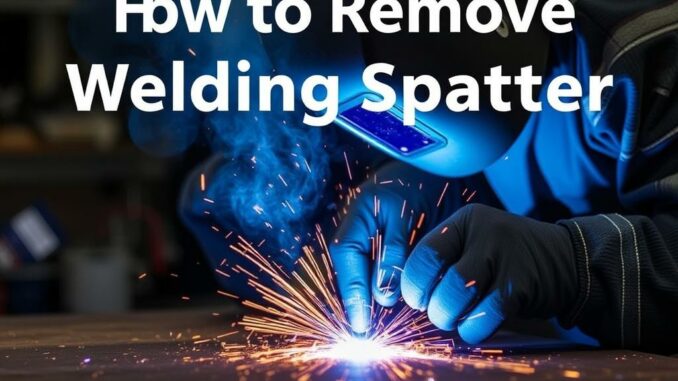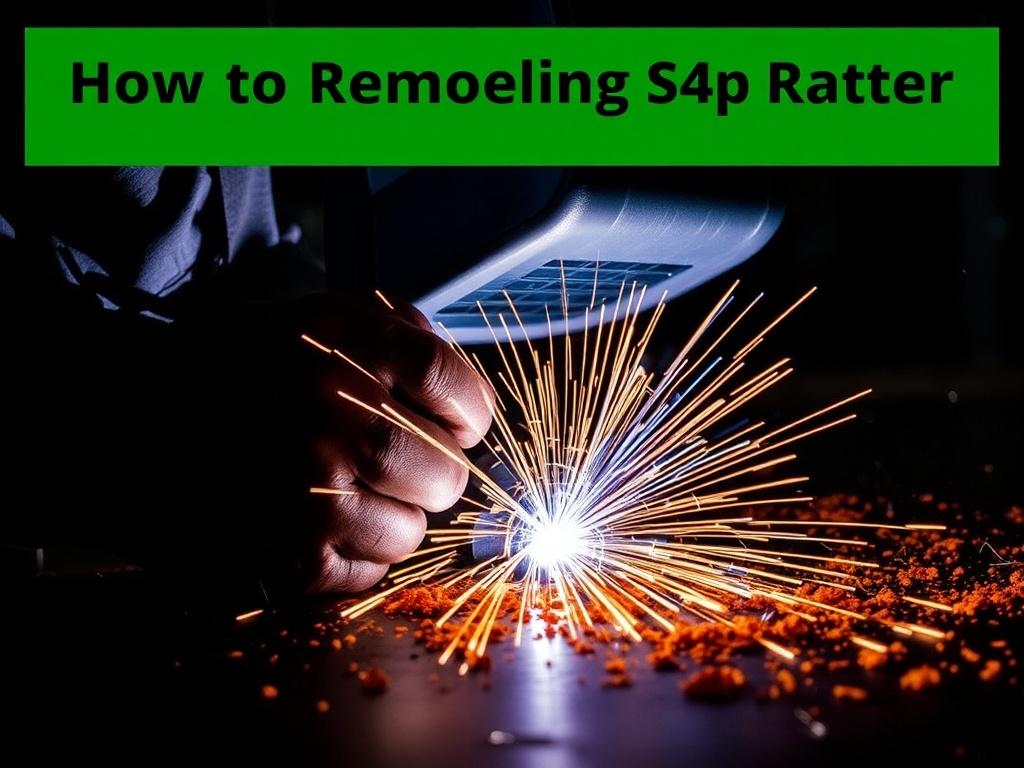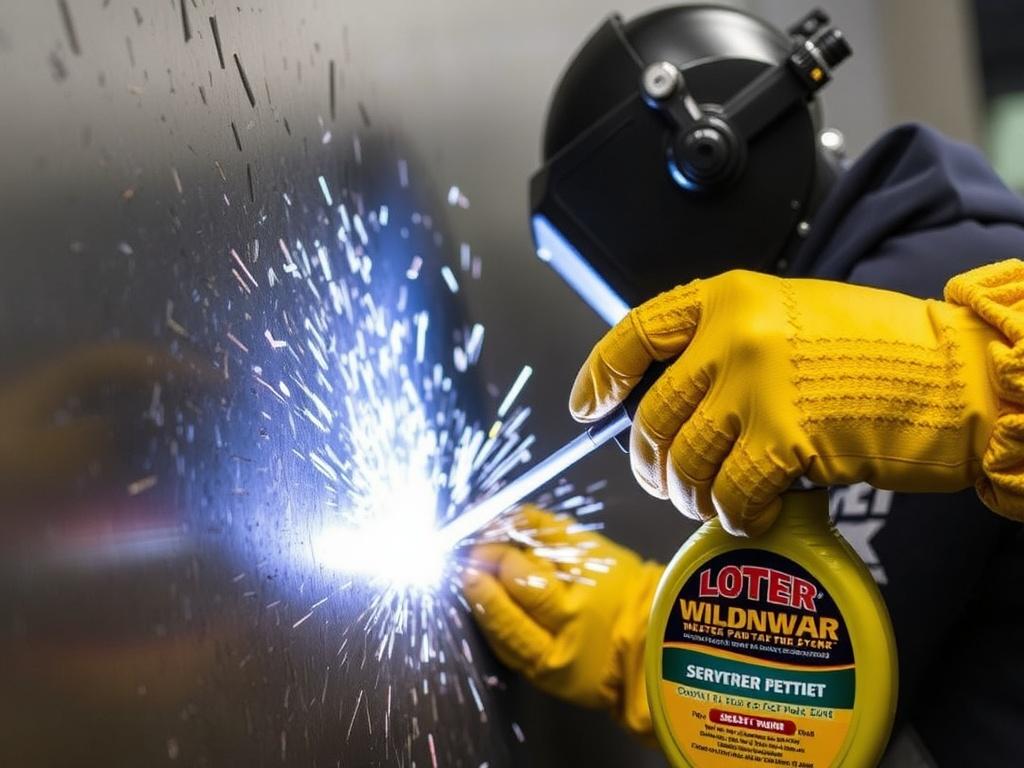
Welding is a vital skill in many industries, from construction to automotive repair, fabrication to manufacturing. However, anyone who has ever worked with welding knows the frustration of dealing with welding spatter—those pesky little bits of molten metal that stick to your workpiece and cause a mess. Removing welding spatter effectively is essential not only for aesthetic reasons but also for the integrity and quality of your work. In this comprehensive guide, we’ll explore everything you need to know about welding spatter, why it forms, and most importantly, how to remove it efficiently and safely.
What is Welding Spatter and Why Does It Happen?
Before diving into removal techniques, it’s crucial to understand what welding spatter actually is and why it forms during the welding process. Welding spatter consists of small droplets of molten metal that are ejected from the weld pool during welding and land on the surrounding surface. These droplets cool rapidly and adhere to the base material. Not only does this make your workpiece look untidy, but it can also interfere with subsequent fabrication steps like painting, coating, or further welding.
The main reasons welding spatter happens include:
- Incorrect welding parameters: High voltage or amperage settings increase the spatter formation.
- Poor technique: Inconsistent electrode angle or travel speed causes metal droplets to escape.
- Contaminants: Dirt, rust, oil, or paint on the material can increase spatter.
- Electrode conditions: Worn or incorrect electrodes can create more spatter.
- Shielding gas issues: Improper gas flow rates or wrong gas mixtures impact spatter levels.
Understanding these causes helps not just in removal but also in minimizing spatter formation to begin with.
The Impact of Welding Spatter on Your Work
Many welders might view spatter as a minor nuisance, but in reality, its impact can be far-reaching. Spatter contamination compromises the aesthetic finish of welds because these small metal droplets mar the smooth surface you aim to achieve. In industries where precision and appearance matter—such as automotive manufacturing, aerospace, or decorative metalworks—spatter can lead to costly rework or rejection of parts.
Moreover, large amounts of spatter can interfere with further welding passes, causing defects like inclusions or weak points. Spatter stuck on surfaces also hinders final treatments, like painting or powder coating, since paint adhesion is uneven. This means the spatter must be removed completely before proceeding.
Common Methods for Removing Welding Spatter

Now that you’re familiar with the causes and impact of welding spatter, let’s look at the various methods you can use to remove it. Removing spatter effectively depends on the size of the droplets, the material involved, and the desired finish quality. Often, combining multiple methods yields the best results.
1. Mechanical Removal Techniques
Mechanical methods are some of the most straightforward and widely used ways to get rid of welding spatter. They involve physically scraping, grinding, or brushing off the spatter using various tools. Here are some popular options:
| Technique | Description | Pros | Cons |
|---|---|---|---|
| Wire Brushing | Using handheld or power wire brushes to scrub off spatter. | Inexpensive, easy to use, effective on small deposits. | Can scratch delicate surfaces; time-consuming for large areas. |
| Grinding | Utilizing angle grinders with grinding discs to remove hardened spatter. | Fast, precise for heavy spatter, smooth finish achievable. | Generates dust and sparks; can remove too much base metal if not careful. |
| Chipping Hammer | Striking spatter spots with a hammer to knock them off. | Good for thick or large spatter, low equipment cost. | Less control, risk of damaging base material. |
| Scraping | Manual scrapers or sharp tools to pry spatter off. | Precise, no power tools needed. | Labor-intensive, less effective on hardened spatter. |
Using mechanical removal techniques is often necessary when spatter has hardened or covers large areas. However, care must be taken to avoid damaging the underlying metal. Protective gloves and eye protection should be worn at all times during these tasks to prevent injury.
2. Chemical Removal Methods
Certain chemicals can be used to dissolve or loosen welding spatter, making it easier to scrape or brush off. Chemical removal is less common than mechanical methods but can be valuable in specialized settings.
- Acid Pickling: Mild acids dissolve surface scale and spatter, but acids must be handled carefully due to their corrosiveness.
- Paint Strippers or Solvents: Help remove spatter combined with paint or coatings; typically part of a multi-step cleaning process.
- Spatter Remover Sprays: Commercially available sprays designed specifically to loosen spatter before mechanical removal.
Chemical methods require proper ventilation, personal protective equipment, and adherence to safety protocols. They are mostly used in controlled environments or when mechanical methods are impractical.
3. Thermal Removal Techniques
Because spatter hardens similarly to the welded metal, applying heat can make it easier to remove by softening the deposited blobs. Thermal removal might involve:
- Heating the spatter with a torch to weaken the connection.
- Using localized induction heating systems that target the spatter without affecting the base metal.
While effective in certain applications, thermal methods require skill to avoid damaging the base material or creating distortion. They are commonly used for heavy spatter that resists other removal processes.
4. Surface Finishing Processes
Additional surface finishing processes can help both in removing residual spatter and smoothing the surface left behind. Examples include:
- Blasting: Abrasive blasting with materials like sand, glass beads, or aluminum oxide removes small spatter and cleans the surface.
- Buffing and Polishing: After mechanical removal, polishing buff wheels or pads help achieve a smooth, finished look.
Among these, abrasive blasting is particularly effective at reaching irregular surfaces and corners where spatter behaves stubbornly. Industrial workshops often combine abrasive blasting after grinding or wire brushing.
Step-by-Step Guide to Removing Welding Spatter Effectively
Let’s walk through a practical approach to removing welding spatter to get the best result with minimal damage to your workpiece. This process is adaptable depending on the severity of the spatter.
Step 1: Safety First
Always begin by protecting yourself. Welding spatter removal often produces metal dust, sparks, and sharp edges. Wear heavy gloves, safety glasses or a full-face shield, long sleeves, and dust masks or respirators as necessary. Ensure your work area is well-ventilated and free from flammable materials.
Step 2: Inspect the Workpiece
Identify where the spatter lies and examine how firmly the droplets are attached. Note any fragile or thin spots in the base metal to avoid damage. Assess whether you need just surface cleaning, or more aggressive removal.
Step 3: Choose Your Removal Method
Select the appropriate technique based on the spatter characteristics:
- For light to moderate spatter on thick materials: wire brushing, scraping, or light grinding.
- For heavy or hardened spatter: angle grinder or chipping hammer.
- For delicate surfaces: chemical removers or light abrasive blasting.
Step 4: Remove the Spatter
Proceed with your chosen method, taking care to maintain control and avoid gouging the base metal. Use steady strokes with wire brushes; for grinders, hold tools firmly and avoid lingering in one spot excessively to prevent overheating. When using chemicals, follow the manufacturer’s instructions precisely.
Step 5: Clean and Finish
After removal, clean the area thoroughly using solvents or degreasers to get rid of dust, residue, or chemical traces. Consider a final abrasive blasting or polishing pass to achieve a smooth finish or prepare the surface for painting or coating.
Step 6: Review and Prevent
Look over your work and ensure all spatter has been removed. To minimize future problems, check and adjust your welding parameters, improve your technique, and ensure the base materials are clean before welding.
Tips to Reduce Welding Spatter in the First Place

The best way to save time and effort in removing welding spatter is to reduce its formation. Here are some simple but effective tips:
- Use the Correct Welding Parameters: Follow manufacturer specs for voltage, amperage, and wire feed speed.
- Maintain Clean Surfaces: Clean the metal thoroughly before welding to remove rust, oil, or paint.
- Proper Electrode Selection: Use the right electrode type, size, and maintain electrode tips to reduce spatter.
- Optimize Shielding Gas Flow: Too much or too little gas flow affects spatter stability.
- Welding Technique: Maintain stable arc length, consistent travel speed, and correct electrode angle.
- Consider Spatter-Reducing Accessories: Use nozzles and anti-spatter sprays or gels.
Common Tools and Products for Welding Spatter Removal

Choosing the right tools and products improves your efficiency and results. Here is a handy comparison of popular options:
| Tool/Product | Best For | Advantages | Limitations |
|---|---|---|---|
| Wire Brush (Handheld/Power) | Light to moderate spatter | Affordable, versatile, easy to use | Time-consuming for heavy spatter, surface scratches |
| Angle Grinder with Grinding Disc | Heavy, hardened spatter | Fast, effective for large areas | Generates sparks, requires skill |
| Chipping Hammer | Thick spatter deposits | No power required, good control | Less precise, risk of surface damage |
| Abrasive Blasting Equipment | Complex shapes, fine cleaning | Reaches corners, cleans surface thoroughly | Needs specialized setup, potentially costly |
| Spatter Removal Sprays | Loosening spatter prior to mechanical removal | Reduces effort, protects base metal | Additional step, some chemicals involved |
Safety Precautions When Removing Welding Spatter
Removing welding spatter might seem straightforward, but it comes with its set of hazards that you must handle responsibly.
- Eye Protection: Always wear safety goggles or a face shield to protect against flying metal fragments or dust.
- Gloves: Use heavy-duty gloves to avoid cuts from sharp spatter and burns from hot surfaces.
- Respiratory Protection: Grinding and blasting can produce fine dust and fumes; wear a dust mask or respirator.
- Hearing Protection: Noise from grinders or hammers can be loud; use ear plugs or earmuffs.
- Ventilation: Perform chemical or abrasive removal in well-ventilated areas or use exhaust systems.
- Fire Safety: Sparks from grinding can ignite nearby materials; keep the workspace clean and have a fire extinguisher handy.
Conclusion: Achieving Clean, Spatter-Free Welds
Welding spatter is an inevitable part of the welding process, but with the right knowledge and techniques, removing it effectively becomes manageable rather than frustrating. From mechanical grinding and wire brushing to chemical sprays and abrasive blasting, numerous options exist to clean your welds and ensure a flawless finish. More importantly, understanding the causes of spatter can help you reduce it before it forms, saving time and improving the quality of your work.
Whether you’re a professional welder, a hobbyist, or a student learning the craft, investing a little effort in mastering spatter removal will pay dividends in the quality, safety, and durability of your projects. Remember, a clean weld surface is the foundation of strong, precise, and beautiful metalwork.
Now that you know how to remove welding spatter effectively, it’s time to put these techniques into practice and enjoy the satisfaction of pristine welds every time.
